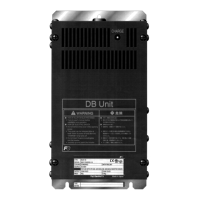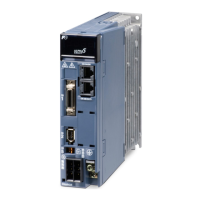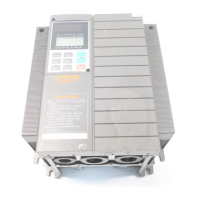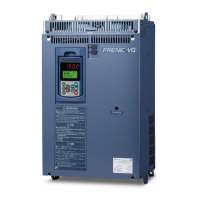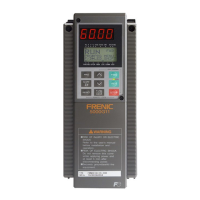2-15
2.3.5 Wiring precautions
Follow the rules below when performing wiring for the inverter.
(1) Make sure that the source voltage is within the rated voltage range specified on the nameplate.
(2) Be sure to connect the three-phase power wires to the main circuit power input terminals L1/R, L2/S and
L3/T of the inverter. If the power wires are connected to other terminals, the inverter will be damaged when
the power is turned on.
(3) Always connect the grounding terminal to prevent electric shock, fire or other disasters and to reduce
electric noise.
(4) Use crimp terminals covered with insulated sleeves for the main circuit terminal wiring to ensure a reliable
connection.
(5) Keep the power supply wiring (primary circuit) and motor wiring (secondary circuit) of the main circuit, and
control circuit wiring as far away as possible from each other.
• When wiring the inverter to the power source, insert a recommended molded case circuit breaker
(MCCB) or a ground fault circuit interrupter (GFCI) (with overcurrent protection) in the path of each
pair of power lines to inverters. Use the devices recommended ones within the related current range.
• Use wires in the specified size.
• Tighten terminals with specified torque.
Otherwise, fire could occur.
• Do not connect a surge suppressor to the inverter's output circuit.
• Do not use one multicore cable in order to connect several inverters with motors.
Doing so could cause fire.
• Ground the inverter in compliance with the national or local electric code.
Otherwise, electric shock or fire could occur.
• Qualified electricians should carry out wiring.
• Be sure to perform wiring after turning the power off.
Otherwise, electric shock could occur.
• Be sure to perform wiring after installing the inverter.
Otherwise, electric shock or injuries could occur.
• Ensure that the number of input phases and the rated voltage of the product match the number of
phases and the voltage of the AC power supply to which the product is to be connected.
• Do not connect the power source wires to output terminals (U, V, and W).
Doing so could cause fire or an accident.
2.3.6 Wiring for main circuit terminals and grounding terminals
Table 2.9 shows the main circuit power terminals and grounding terminals.
Table 2.9 Symbols, Names and Functions of the Main Circuit Power Terminals
Symbol Name Functions
L1/R, L2/S, L3/T
Main circuit power
inputs
Connect the 3-phase input power lines.
U, V, W Inverter outputs Connect a 3-phase motor.
R0, T0
Auxiliary power input for
the control circuit
For a backup of the control circuit power supply, connect AC
power lines same as that of the main power input.
P1, P(+) DC reactor connection
Connect a DC reactor (DCR) for improving power factor (an
option for the inverter whose capacity is 60HP for 208V, 75HP for
460V or below).
P(+), N(-) DC link bus
Connect a DC link bus of other inverter(s). An optional
regenerative converter is also connectable to these terminals.
R1, T1
Auxiliary power input for
the fans
Normally, no need to use these terminals. Use these terminals for
an auxiliary power input of the fans in a power system using a
power regenerative PWM converter (RHC series).
G
Grounding for inverter
and motor
Grounding terminals for the inverter’s chassis (or case) and
motor. Earth one of the terminals and connect the grounding
terminal of the motor. Inverters provide a pair of grounding
terminals that function equivalently.

